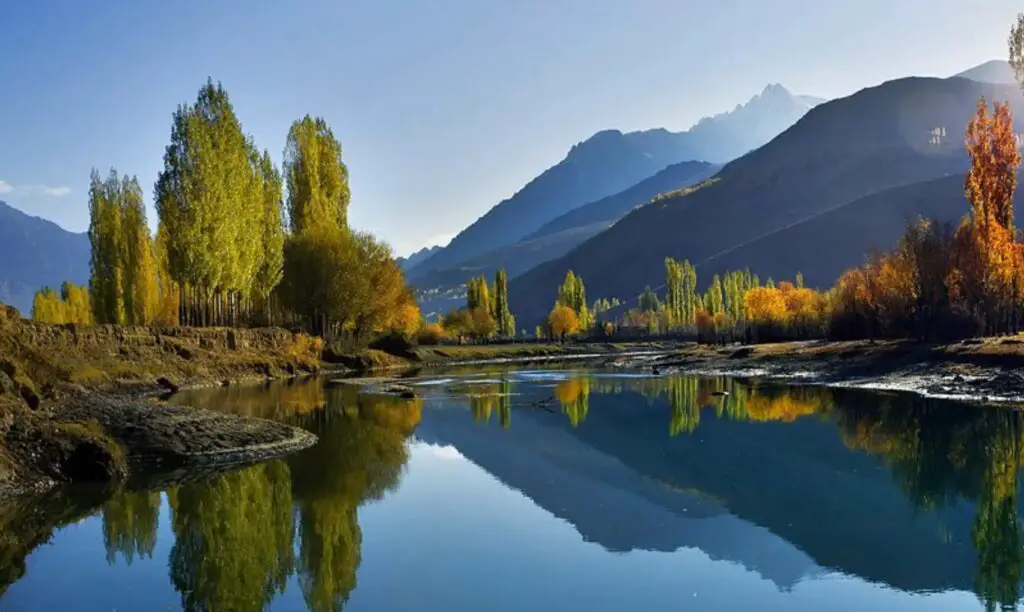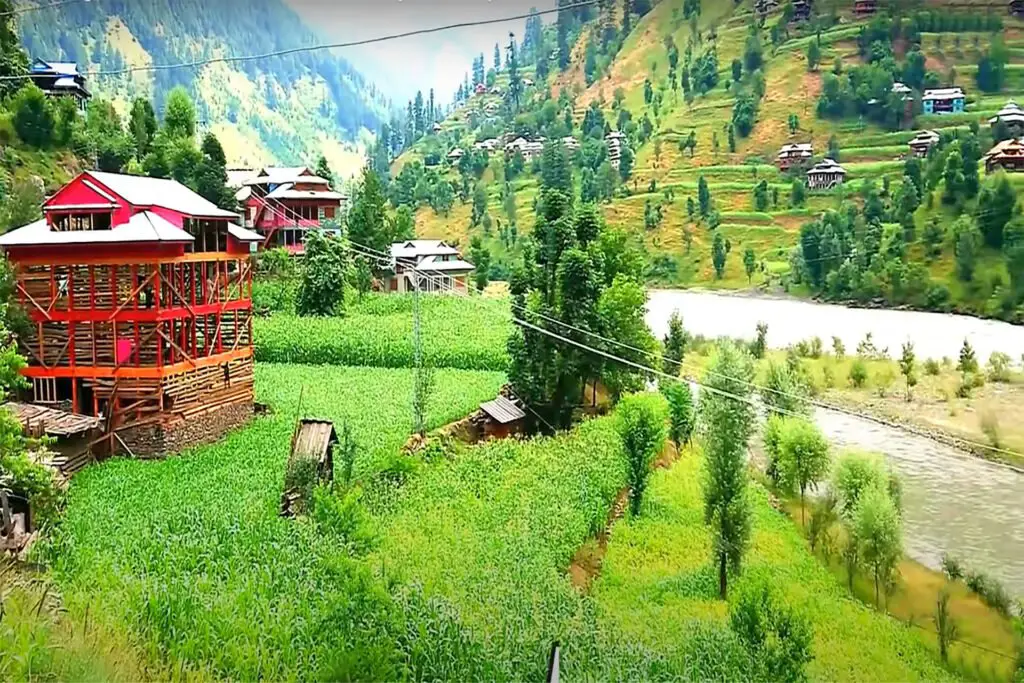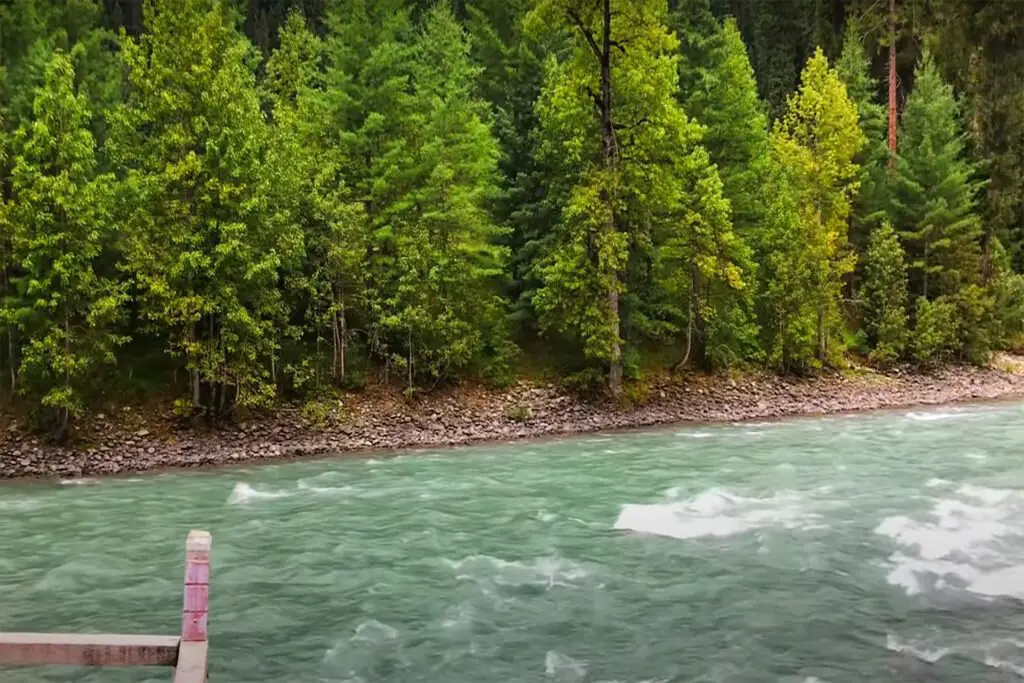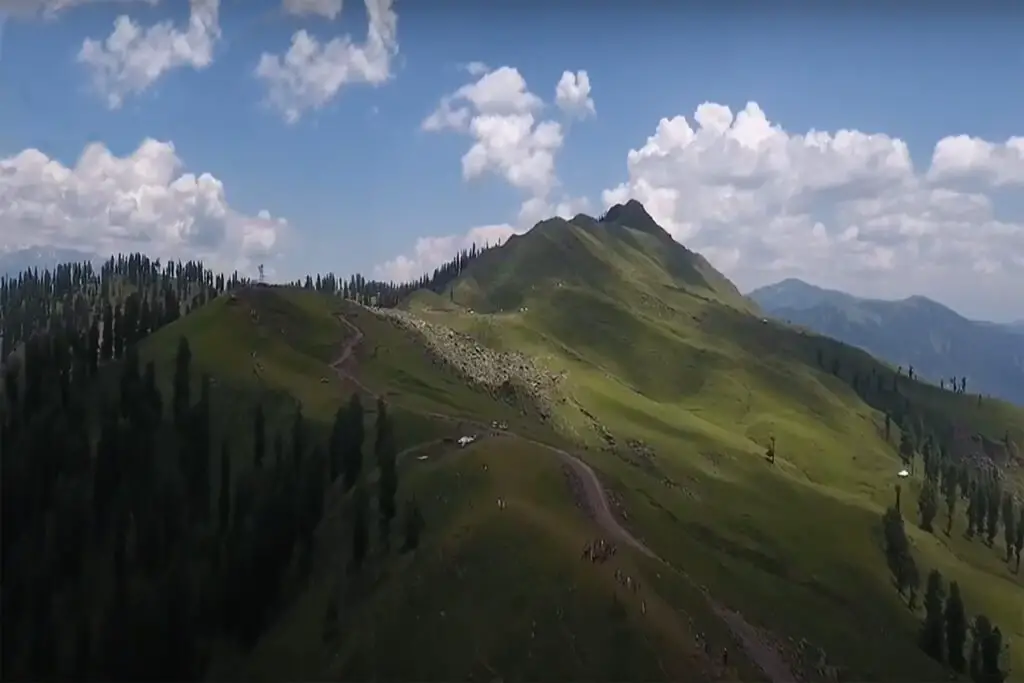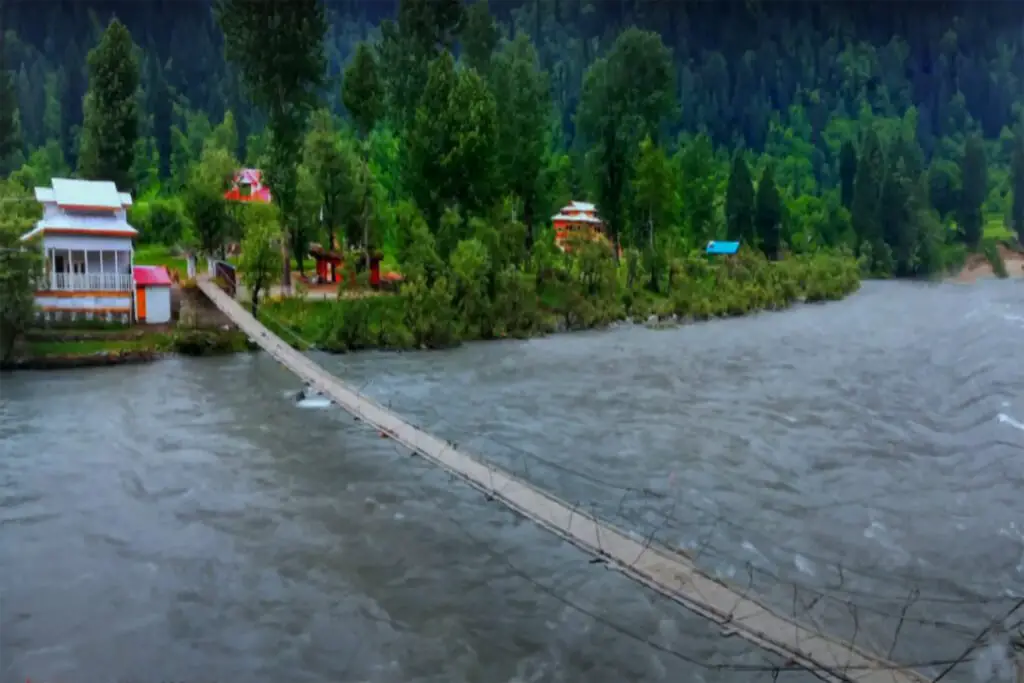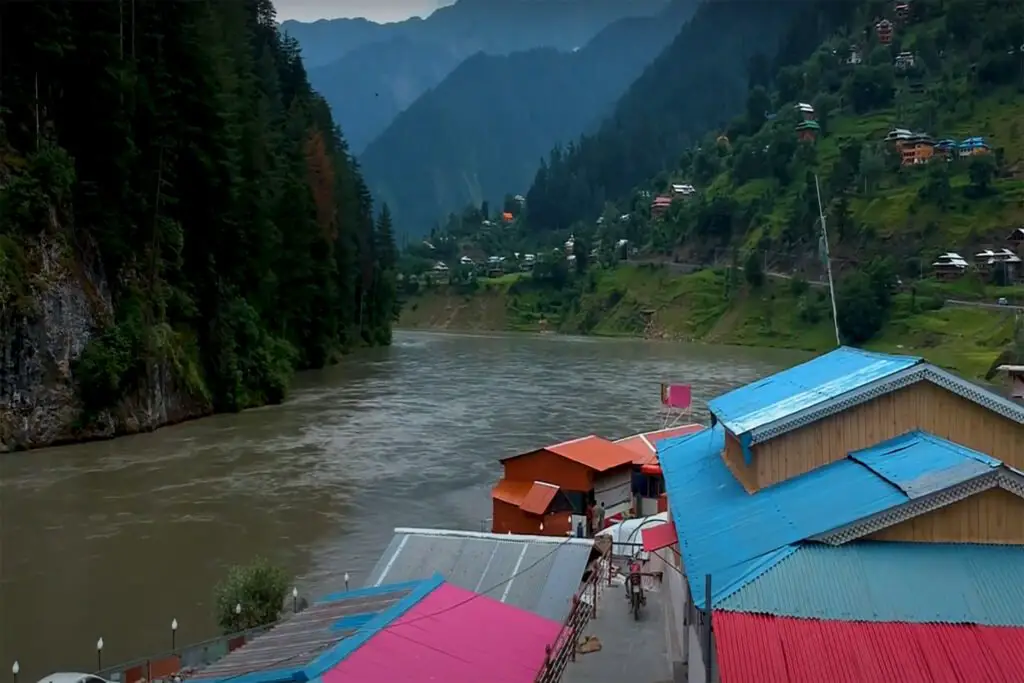Nestled in the heart of the Northern Areas of Pakistan lies the breathtaking Gupis Valley. The valley is known for its stunning natural beauty, rich cultural heritage, and warm hospitality of its locals. Gupis Valley is situated in the district of Ghizer, which is part of the Gilgit-Baltistan region of Pakistan.
Location of Gupis Valley Gilgit
The valley is located at an altitude of 2,500 meters above sea level, about 112 kilometers (70 miles) west of Gilgit on the bank of River Gilgit, and is surrounded by towering mountain peaks, glistening glaciers, and lush green forests. The crystal clear waters of the Ghizer River flow through the valley, providing a picturesque backdrop for visitors.
People & Languages of Gupis Valley
The local castes settled in this area are the Murrats, Zagars, Kakakhail, Bodonge, Broosho, Gilite, Burange, Sher Khane, Sukhe, Bujuke, Phate, Dorane, Shamshere, Shale and Sarale. The people, mostly belong to the Murrata (Yashkuns) caste. The languages spoken there are Brooshaaski, Khowar, and Shhena.
The 35-kilometer (22-mile) road between Gahkuch (the capital of Ghizer District) and the Gupis Valley is full of beautiful scenery and breathtaking views. The turquoise water of the river flowing along the road and the surrounding fields and forests are very charming for tourists.
Yangal is the first village in the Gupis Valley. Besides this, we have Raoshan, Center Gupis, Yungal, Sumal, Hakkis, Jindrote, Dahimal, Pingaal and Khasundar, Khalti and Hamardas. The Gupis Suspension Bridge is the terminus towards the Yasin Valley and the Shandur Pass towards Chitral. Center Gupis is the business center of Gupis Valley, where there are shops, hospitals, schools, colleges, banks, and hotels.
How to get to Gupis Valley
From Gilgit to Gupis
Local service (HIACE VAN) is the best choice. You have to book your ticket from near Gahdi Bagh under a bridge known as Shajee Ada on River View Road or from Ishkoman Ada Puniyal Road near Muhamadi Gahdi Bagh mosque. Vehicles depart every hour from 10 a.m. to 5 p.m.
The ticket costs just 350 rupees (Please check for the latest rates). Once you are on the Hiace van it takes 2 hours to go to Gahkuch and there you rest for tea, then the journey starts again and after 45-1 hours you reach the center of Gupis. So it takes almost 3 hours to get to Yasin by local transport. But in return, vehicles leave for Gilgit early at 8 a.m. So you also took care of his return.
Where to stay in Gupis Valley?
There are many hotels and guesthouses in the Gupis Valley where you can easily find accommodation. But all these hotels and guesthouses have limited resources but they are affordable and the food they serve is fresh, healthy, and full of nutrition. The price may vary depending on tourist demand.
Major Tourist Attractions Near Khalti Lake
One of the main attractions of Gupis Valley is its rich cultural heritage. The valley is home to several historic landmarks, including the ancient Gupis Fort, which dates back to the 14th century. The fort is a symbol of the valley’s rich history and cultural heritage and offers visitors a glimpse into the past.
A few kilometers from the Gupis Valley there is a charming lake called as Khalti Lake. Khalti Lake is renowned as the habitat for trout fish.
Major tourist attractions include points like
- Gupis Fort,
- Stone Circles
- Chartoi,
- Shingalote Village
- Khalti Lake and many more.
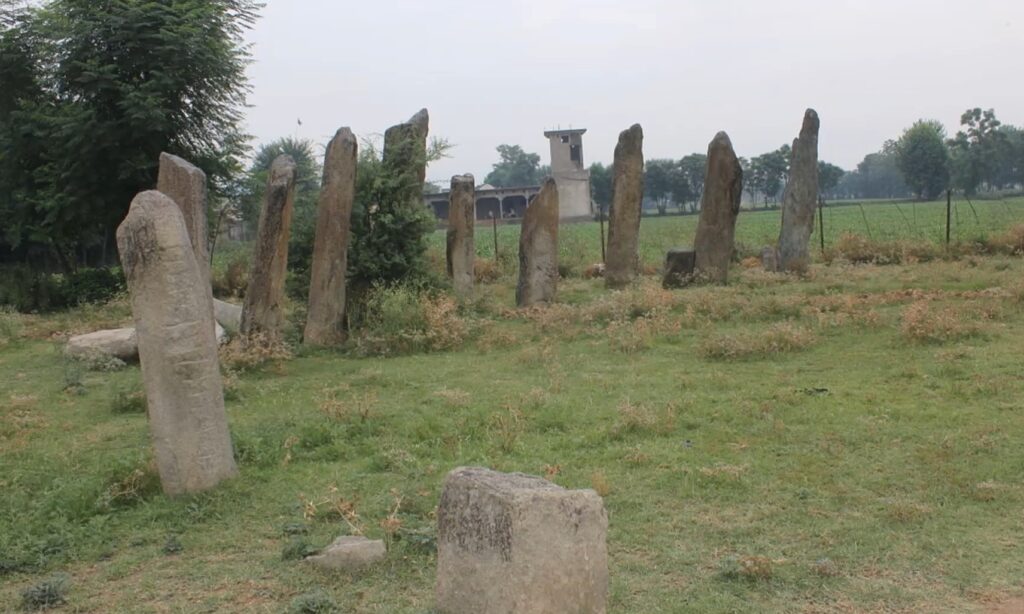
Gupis Fort
This fort was built by British colonizers in 1805. It is located in the east on Gilgit-Chitral Road near Fauji Foundation Medical Centers Gupis. The army once used this fort for defensive purposes. The fort has living quarters, storerooms, poison cells, and offices, surrounded by a wall built to defend against attack.
The fort has been well-preserved over the years and offers visitors a unique opportunity to experience the architecture and lifestyle of ancient times. The fort is surrounded by lush green gardens and offers stunning views of the surrounding mountains and valleys.
Khalti Lake
Located in the village of Khalti in the Gupis Valley, it is a 20-30 minute drive from Gupis and was created when the water of the river stopped on the plain. It is an important source of fresh water and is well known as a trout fish. This lake usually freezes over in winter. It is about 30-70 feet deep and the locals hold a soccer tournament during the winter, even though it is dangerous to play on the frozen surface.
Visit the Megalithic Stone Circles
The Thar is also home to some of Pakistan’s most amazing wildlife species that have learned to survive the heat and dryness of the desert. Some of the rarest animals, as well as local and migratory birds, can be seen grazing on the thorn bushes and roaming the vastness of this desert, including Blackbuck, Chinkara, Bishnois, Peacock Fox, Peacock, Eagles, Harriers, Falcons, Buzzards, Kestrels and vultures to name a few.
Chartoi
Chartoi is located in Cheermayoun in the Gupis Valley. Known as the Fairy Gate, it is a rock-shaped door with a beautiful texture. There are many stories associated with this gate. A well-known myth is that a fairy mother lived inside the fortress. It was a trend there that when a girl was getting married, she had to sacrifice a chicken in front of the gate as she passed by. This trend continues as it has been.
Local people sacrifice an animal mostly goat or chicken whenever there is a festival or any family function. They believe that if one does not follow this trend, one may go through psychological and mental disorders. Previously, women were not allowed to wear red dresses. The new generation of the area ignores these superstitions, but the older people firmly believe it.
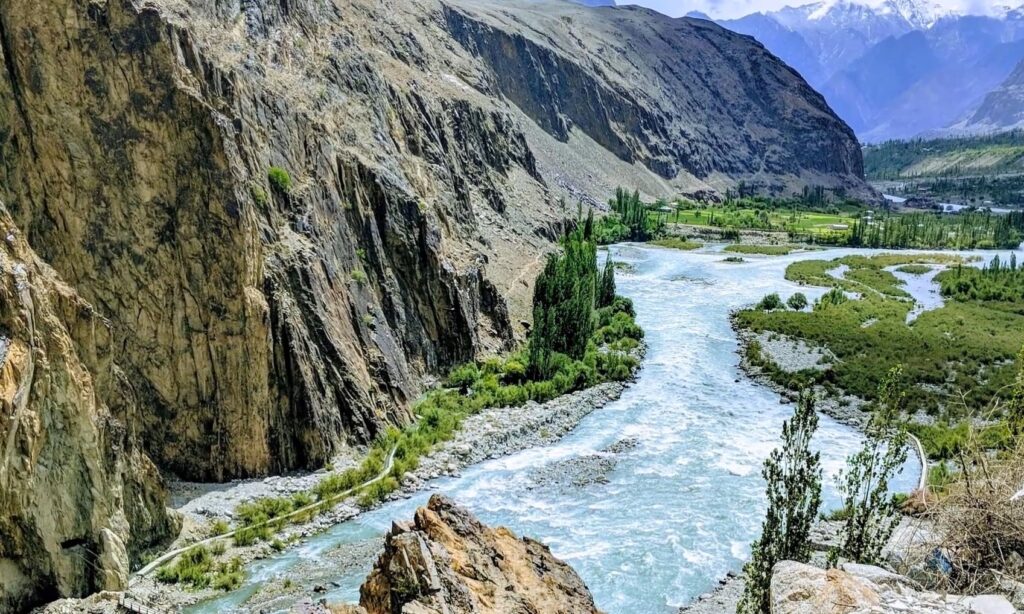
Language, culture, and religion in the Gupis Valley
The people of the Gupis Valley are peaceful, hospitable, shy, and polite. It is a multi-ethnic valley and two main languages are spoken here: Shina and Khowar. Villagers in the valley earn their living by farming and raising animals. The majority are Ismailia Muslim, followers of His Highness Prince Karim Aga Khan. However, there are also Shia Muslims and Sunni Muslims. The elders are illiterate, but the younger ones are well-educated. Co-education is common in this valley.
The town of Gupis is also known for its traditional wooden houses, which are a sight to behold. The houses are made entirely out of wood, with intricate carvings and designs on the doors and windows. The houses are a testament to the valley’s rich cultural heritage and are an important part of the local identity.
Visitors to Gupis can explore the town’s narrow streets and alleys, which are lined with traditional houses and shops selling local handicrafts and souvenirs. The town’s market is a bustling hub of activity, with vendors selling everything from fresh produce to traditional clothes and jewelry.
Mobile and internet service in Gupis Valley
Zong, Scom, and Telenor operate in Gupis Valley but SCO is the only network providing data services at very expensive prices. Scom data services are slightly better than other valleys like Yasin, and Ishkoman.
Local guides in Gupis Ghizer
If you want to explore the Gupis Valley, spend at least 3 days there. Then go hiking with some local tour guides.
Annual Festival at Gupis Valley
Gupis Valley is also known for its vibrant cultural festivals, which are celebrated with great enthusiasm and fervor. The valley’s annual festival, known as the Gupis Polo Festival, is a highlight of the local calendar and attracts visitors from all over the region.
The festival is a celebration of the valley’s traditional polo game, which is played on horseback with a wooden ball. The festival features polo matches, traditional dance performances, and music shows, and offers visitors a unique opportunity to experience the local culture and traditions.
In addition to its rich cultural heritage, Gupis Valley is also a hub for adventure sports and outdoor activities. The valley is surrounded by several trekking routes and hiking trails, which offer stunning views of the surrounding mountains and valleys.
One of the most popular treks in the area is the Gupis Valley Trek, which takes visitors through the valley’s scenic valleys and forests. The trek offers stunning views of the Ghizer River and the surrounding peaks and is a great way to explore the natural beauty of the region.
Best Time to Visit Gupis Valley
The best time to visit Gupis Valley is from April to September. During these months, the average daily temperature remains below 20 degrees Celsius. so it is the perfect time to visit Gupis Valley as fruits, fresh vegetables and trout are easily available during these months. However, outside of this time, you will also face cold and harsh weather and the nights are colder than the days.
Gupis Valley is also a great base for exploring the nearby Khunjerab Pass, which is one of the highest mountain passes in the world. The pass offers stunning views of the Karakoram Range and connects Pakistan with China.
The valley is also known for its rich biodiversity, with several species of flora and fauna found in the area. The valley is home to several rare and endangered species, including the snow leopard, ibex, and markhor.
The valley’s ecosystem is also important for the local economy, as it supports several traditional livelihoods such as agriculture, forestry, and livestock rearing. The valley’s fertile soil and abundant water resources provide ideal conditions for growing crops such as wheat, maize, and barley.
In conclusion, Gupis Valley is a hidden gem in the heart of Northern Pakistan, offering visitors a unique opportunity to explore the region’s rich cultural heritage and natural beauty.

